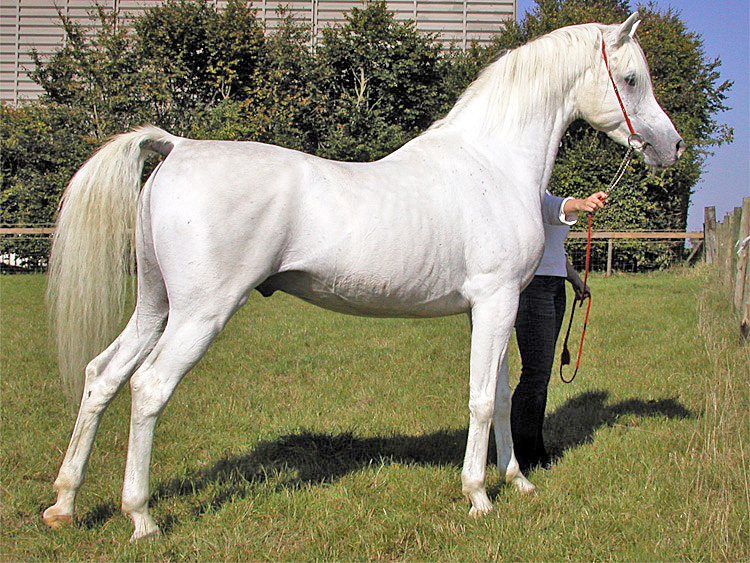The Arabian horse
Endowed with an excellent temperament, it is balanced, courageous and docile. It is very hardy, very resistant, enduring (big bottom), energetic, ardent, with a lot of nerve impulses, fast and sober. Exceptional sire, prepotent, true donor of universal noble blood.

Caractère et aptitudes du cheval
Brilliant gaits, ample, low, light, tense. Unique, harmonious floating action. Aptitude for dressage and show jumping.
Utilisations du cheval
The Arabian horse, one of the oldest breeds, certainly the purest there is, with a poorly known origin, would have been created, according to the legend, by Allah with a handful of south wind. The cradle of the race would be located on the Central plateau of Asia (“Asian race” according to Sanson), from where it would have emigrated to Europe with the invasions of the Aryas who came from Lran and the north of India (hence “Aryan race” according to Piètrement). Moreover, this horse will be noticed by Solomon, king of the Hebrews, and by the Pharaohs.
Around the 6th century, the Arabs adopted it and Mohammed decreed that in the creation, it was just after the man. It then underwent a rigorous selection by the Bedouins of Arabia. It was used by the Nomads of the Near and Middle East during the conquest of the Iberian Peninsula and introduced in France in the 8th century, during the battle of Poitiers. On their return, the crusaders brought back some from the Near East. The Arabian horse began to modify many breeds of horses used for war and found in Napoleon an ardent defender who imposed its introduction in the stud farms. In the nineteenth century, it will allow the creation of the Anglo-Arabian in France. Having become cosmopolitan and because of its prodigious hereditary power, the Arab has for centuries strongly influenced the development of many equine breeds by improving their aesthetics, their nervous system, and their endurance. “It is from them that the most beautiful horses in Europe are drawn” wrote Buffon in the 18th century.
Remarkable saddle horse, much sought after for leisure riding and for endurance raids. It can also be used for light drafting. It also participates in races. It continues to play an important role in the improvement of many equine breeds throughout the world.
Morphologie du cheval
“Artistic horse, completed, ideal in its species” (Sanson). Type of beauty of the current horse. It has nobility and harmony combined with vigor and energy. Very distinguished head, square, dry. Flat, broad forehead. Straight or concave profile. Wide gauntlets. Lower lip short and small. Nostril very open, quivering (“wind drinkers”). Ears short, fine, well drawn. Large eyes, slightly protruding. Compact body, inscribable in a square. Long neck, (must drink from the bottom of a bucket without bending the knees), not very thick, graceful, with very silky hair. Long, sloping shoulders. Powerful, muscular, wide chest. Chest wide, ample. Short and straight back. Loin short, thick, wide, and powerful. Horizontal, harmonious, muscular croup. Very dry and resistant limbs. Dense bone structure. Clean tendons. Wide, very dry, and solid joints. Perfect legs. Firm, wide, and black hooves. Tail short and set high. Coat: generally chestnut, bay, or grey. The foal is born with a darker coat which will lighten with time. Long, flowing mane. Size: from 1.48 to 1.56 m. Weight: 450 to 500 kg.
For more information: Arabian blood horses
With Royal Horse, discover flocked supplementary feeds for competition horses (H-350) and for sport and leisure horses (S-250).


